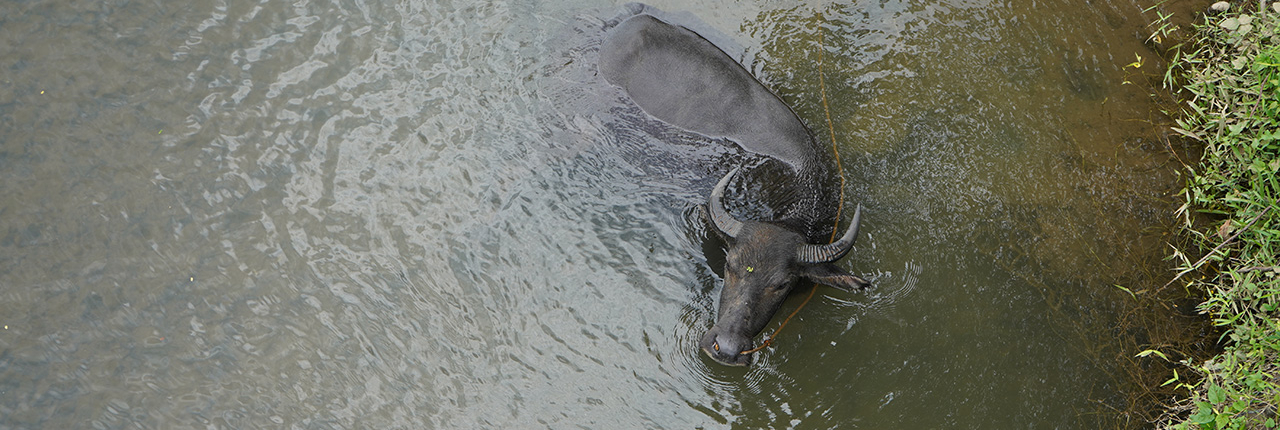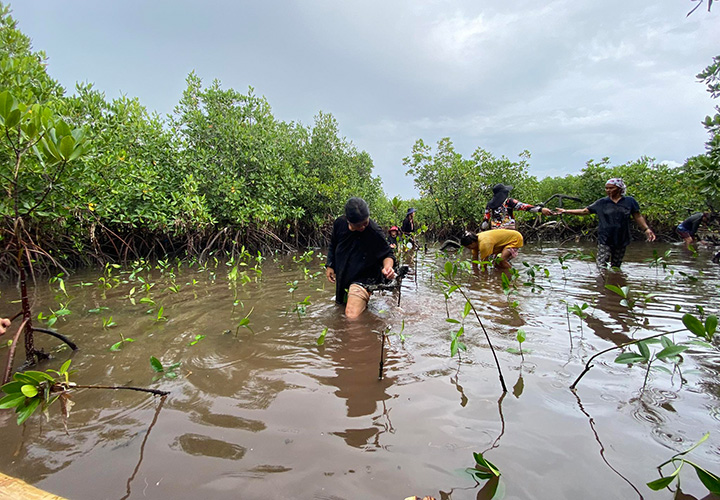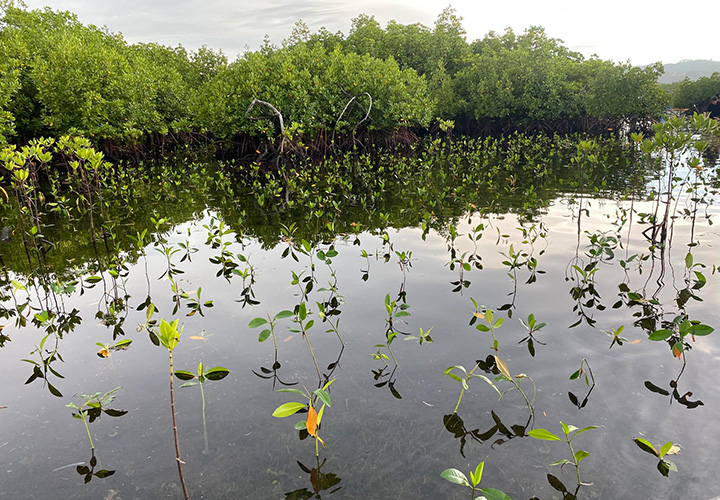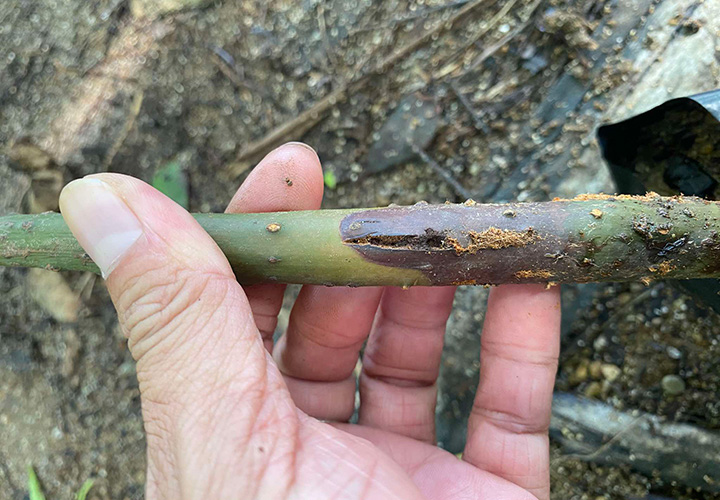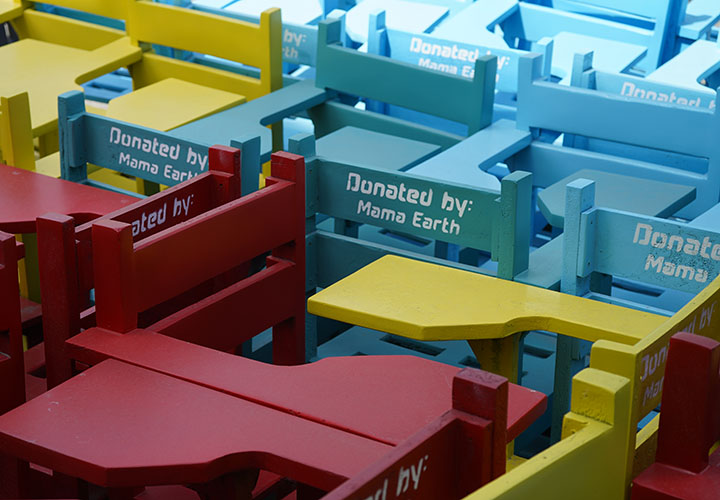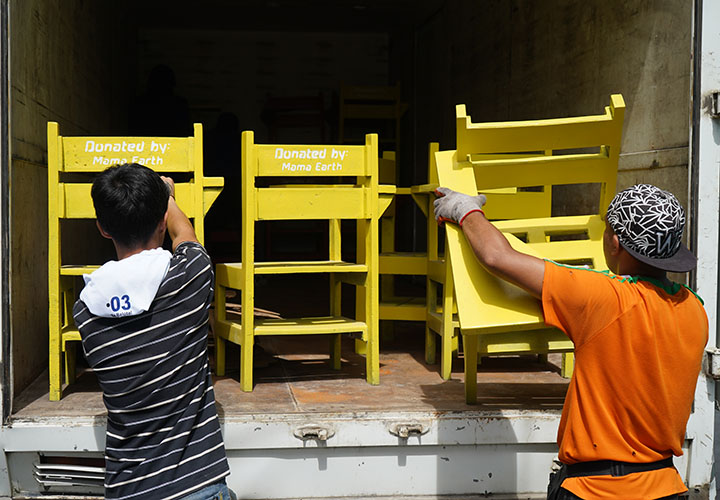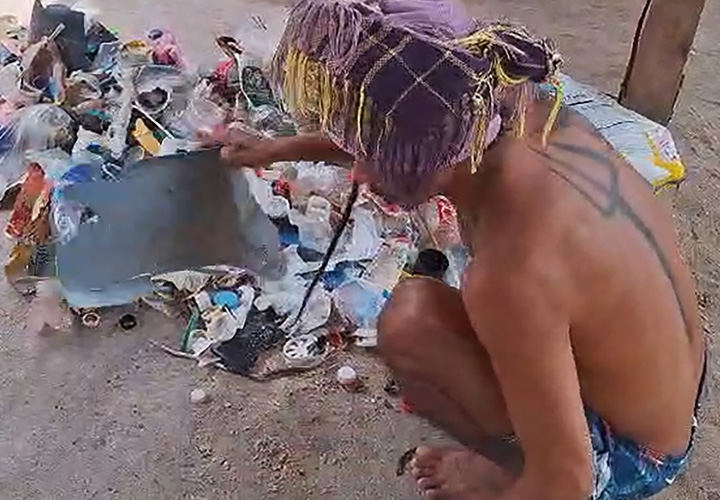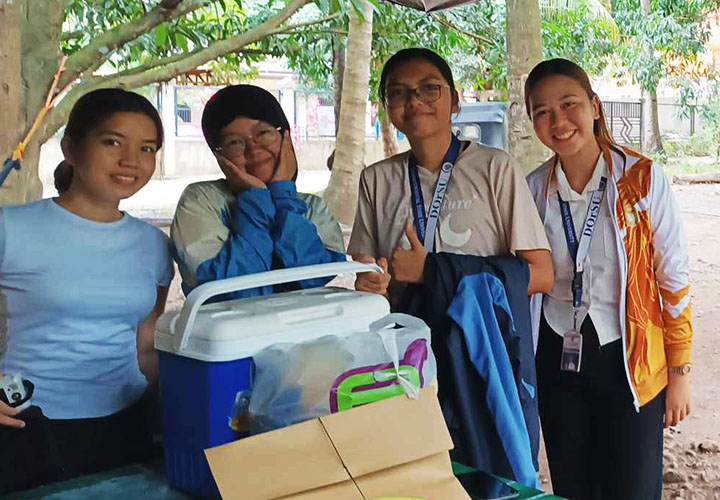Transporting the mangrove seedlings to the planting site can be a challenging endeavor. Here, a fallen tree serves as a transportation bridge.
Even small inlets are filled with mangroves. The denser a mangrove forest is, the more attractive it is as a habitat for many animal and bird species.
It is always an experience to see how the water areas adjacent to the existing mangrove forests fill up with freshly planted mangroves.
We had a worm infestation in two of our nurseries. The leaves of the seedlings turned yellow, and the stems developed dark spots and broke open.
In two of our nurseries, worms had taken up residence in the seedlings. Fortunately, the infested mangroves are easily identifiable. The leaves turn yellowish; the stems develop dark spots that visibly crack. Our remedy is pragmatic. All infested plants were sorted out and burnt to ensure that the worm eggs did not survive.
Under the guidance of Professor Lea AngSinco-Jimenez from the Davao Oriental State University (DOrSU) and the Regional Integrated Coastal Resources Management Center (RIC-XI) in Mati, as well as students from the Department of Environment and Natural Resources, our small work event is scheduled to take place in mid-May. We have obtained permission to break the limestone one hectare and plant six different types of mangroves. This will slowly but surely turn a barren area back into a mangrove jungle. This action is already drawing attention from many local authorities, as it represents a groundbreaking step towards sustainably repairing damage to mangrove forests.
Return to Sender
However, we don’t succeed at everything, which is a good thing. Our student blog in Substack is being put to the test. After more than six months, we have only managed to gain a pitiful following. In our view, the blog posts were substantial and well-researched, but there has been no breakthrough. It therefore remains to be seen whether we would invest this working time elsewhere, as our team is too small to cover all the necessary channels.
We were pleased to deliver 60 school chairs made from recycled plastic to the Olycon School in Monkayo. Our partners, the turtle conservation group Amihan Brothers in Mati, collected the raw material for this on the stretch of Dahican Beach, where the turtles come to lay their eggs. Removing the garbage is essential as the animals struggle to crawl onto the beach and could be prevented from reaching the egg-laying area by the trash. It is equally necessary to provide the hatchlings with barrier-free access to the sea.
Our school chairs, made from garbage collected at the beach, feature the words “Donated by Mama Earth” screen-printed on the back of the seat.
These 60 school chairs, in four different colors, were donated to the Olaycon Integrated School in Monkayo. The need for this school furniture seems endless.
After collecting the garbage at Dahican Beach, there is the time-consuming sorting. Today, it’s done by Winston from the Amihan Brothers.
A photo with Peter from the Amihan Brothers shows where the raw material for the chairs is „harvested“. Our appeal: Please avoid plastic wherever possible.
Collecting garbage is an unpleasant job, especially since it seems that there is no long-term solution. The responsibility remains with us, which is quite right because it is our world that we must preserve. Our behavior is correspondingly important. We should not call for different rules of the game, but rather ask ourselves every day how we can make our planet a little better each day. And we can!
Even if it has already been written many times, plastic should also be avoided for your own interest, as it can break down into microplastics. It has already entered the human body. Not a nice feeling. That’s why our headline fits so well: ‘Return to Sender. ‘ The effects on the human body can be read on the internet and would go beyond the scope of this article. “What is certain, however,” says Dr. Holger Sieg from the Federal Institute for Risk Assessment,” is that a particularly high level of microplastics has been found in fish due to plastic-contaminated seas.”“
Two mangrove Kindergartens have already been set up and a third will follow in May. The children of the planters are looked after here during the planting activities. We provide them with wooden toys, which are very popular. We urgently need to produce more. We will. We promise.
We almost wholly reforested Pujada Bay in Mati. This project has a significant impact, and it is also the target of Master’s theses. Chris from Amsterdam has written his master’s thesis on mangroves and tourism in Pujada Bay, Nikki is writing her master’s thesis on the social impact of Mama Earth reforestation in Mati, and the following master’s student is almost on her way: Chiara from Copenhagen.
And please listen to our Zero Hero song: https://www.youtube.com/watch?v=P2YeTPpN7pk
The production of wooden toys for kindergartens is expanding. Sawed-out figures are now a big hit, and the children are particularly fond of dinosaurs.
Nikki (second from left) is writing her master’s thesis on the social impact of Mama Earth mangroves reforestation around Pujada Bay.

